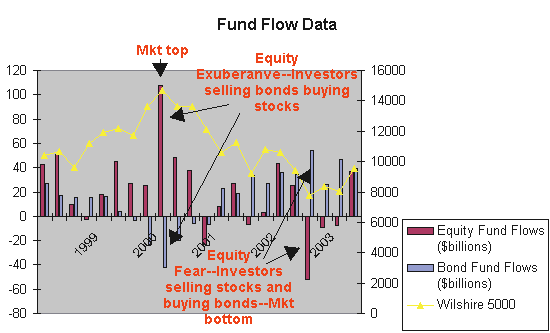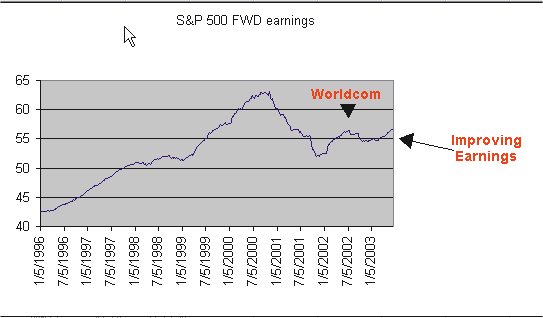Why Investors Should Be Watching The US Treasury Market
Despite the extremely high bullish reading in the investor sentiment surveys,
it would appear as though retail investors are not putting their money where
their mouths are.
According to AMG Data–the company that reports fund flows–for the week
ended June 25, equity funds reported $1.6 billion in outflows, after posting a
gain of $4.5 billion the week before–hardly suggestive of an overly bullish
investor community. So far this year, stock mutual funds have taken in
less than half of what they reported during the same period last year, which was
$70 billion.
On the other hand, taxable bond funds continue to take in money and this week
reported $928 million worth of inflows. So far this year, bond funds have
reported $87 billion worth of inflows–about three times the equivalent of
equity funds.

Weekly Comments
The US economy has yet to feel the impact of a substantive fiscal stimulus
package. And, when one considers the current backdrop of improving consumer
sentiment; projected earnings for the S&P 500
(
SPX.X |
Quote |
Chart |
News |
PowerRating) that are moving up
quite nicely, as evidenced in the chart below; what appears to be a bottoming
out in unemployment (we just had a third straight week of jobless claims);
improving business sentiment–when one considers the regional Fed surveys and
both PMI’s; and the emerging trend in new orders for computers and electronic
products, things continue to look promising for the equity markets going
forward.
However, the one thing that bears–no pun intended–watching is the Treasury
market, which has sold off in the wake of Wednesday’s Fed meeting–much to Mr.
Greenspan’s chagrin, no doubt. Indeed, rates typically move higher in
anticipation of stronger economic growth and higher prices, but this is not your
father’s economy–in fact, its probably more like your grandfather’s economy.
Capacity utilization still remains relatively low and will therefore require an
extended period of low interest rates for things to pick up meaningfully. And,
with short term rates at the bottom of the barrel, the Fed will have to rely
increasingly on longer-term rates to effect policy. Therefore any dramatic
pickup in Treasury yields will end in tears for everyone. Currently, the
currency markets are behaving as though there is still more to go for yields, as
the US dollar has strengthened through the 55 day moving averages against the
euro. We are still below the 3.95% yield in the 10 year note, which is where the
market was trading before May’s Fed meeting. But who knows where Mr. Greenspan’s
line in the sand is–that is, before he begins to jawbone rates lower again, as
he has done over the past two months.

